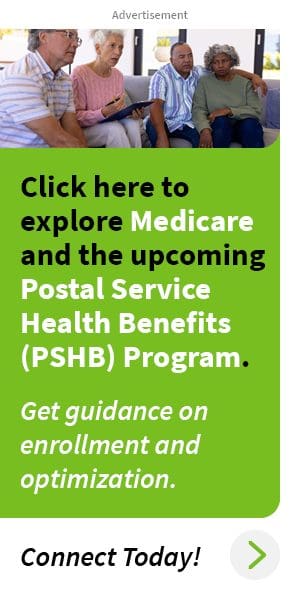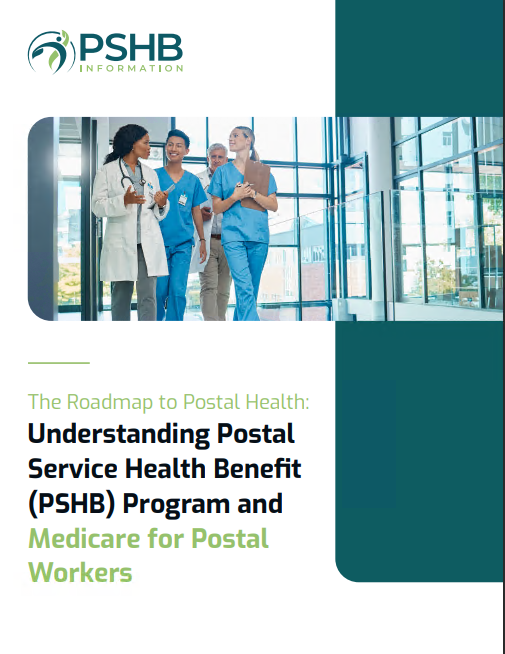Key Takeaways:
- The PSHB program integrates dental and vision benefits, offering enrollees enhanced access to comprehensive care within their healthcare plans.
- Understanding the coverage options and limitations within the PSHB program is crucial for making informed decisions about dental and vision care.
What to Know About Dental and Vision Benefits in the New PSHB Program
As the U.S. Postal Service transitions to the Postal Service Health Benefits (PSHB) Program, enrollees face changes in how they receive healthcare coverage, including dental and vision benefits. This new program is part of the broader shift from the Federal Employees Health Benefits (FEHB) program, and understanding these changes is essential for those affected. This article delves into what the PSHB program means for dental and vision benefits, exploring coverage options, potential limitations, and the implications for current and future enrollees.
Overview of the PSHB Program
The Postal Service Health Benefits (PSHB) Program is designed to cater specifically to the healthcare needs of U.S. Postal Service employees, retirees, and their families. Effective from January 2025, this program represents a significant shift from the previous Federal Employees Health Benefits (FEHB) program, offering a tailored approach to healthcare coverage that includes dental and vision care.
The PSHB program was established under the Postal Service Reform Act of 2022, aiming to provide more cost-effective healthcare options while maintaining a high standard of care. Unlike the FEHB program, which serves a broader range of federal employees, the PSHB program focuses exclusively on postal workers and retirees, thus providing more targeted benefits.
Dental Benefits Under the PSHB Program
Scope of Coverage
One of the significant components of the PSHB program is its dental benefits, which are crucial for maintaining overall health. The program is expected to cover a wide range of dental services, including preventive care such as cleanings, exams, and X-rays, as well as more extensive treatments like fillings, root canals, and crowns. Coverage is also likely to extend to orthodontics, though specifics may vary depending on the plan chosen by the enrollee.
Comparing with Previous FEHB Plans
Under the previous FEHB program, dental coverage was often limited or required enrollment in a separate plan. With the PSHB, there is a push towards integrating these benefits more comprehensively into the overall health plan. This shift means that postal workers and retirees might find it easier to access necessary dental care without the need for additional, separate insurance policies.
Limitations and Considerations
Despite the broader coverage, it’s important for enrollees to be aware of potential limitations within the PSHB program. Some plans may have annual maximum benefits, meaning there is a cap on how much the plan will pay for dental services each year. Additionally, there may be waiting periods for certain procedures, particularly more expensive ones like orthodontics or implants. Understanding these limitations is critical when selecting a plan to ensure it meets the individual’s or family’s needs.
Vision Benefits Under the PSHB Program
Coverage Options
Vision care is another integral part of the PSHB program. Enrollees can expect coverage for routine eye exams, which are essential for detecting issues like glaucoma, cataracts, and macular degeneration early. The program is also likely to cover corrective lenses, including glasses and contact lenses, and possibly even discounts on laser eye surgery.
Transition from FEHB Vision Plans
Under the FEHB, vision care often required separate enrollment in a dedicated vision plan, much like dental benefits. The transition to the PSHB program simplifies this by potentially including vision coverage within the standard health plan options. This integration aims to make it easier for postal workers and retirees to maintain their vision health without the need to juggle multiple insurance policies.
Navigating Vision Care Limits
As with dental benefits, vision coverage under the PSHB program may come with certain limitations. These could include restrictions on the frequency of coverage for new glasses or contact lenses, caps on the amount covered for frames or lenses, and possibly limits on specific services like laser eye surgery. Enrollees will need to carefully review their chosen plan’s details to understand what is covered and any potential out-of-pocket expenses they might incur.
The Importance of Dental and Vision Care
Dental and vision health are crucial components of overall well-being. Regular dental check-ups can prevent serious health issues such as gum disease, which has been linked to heart disease and diabetes. Similarly, maintaining good vision health can improve the quality of life and independence, particularly as people age.
The PSHB program’s inclusion of dental and vision benefits reflects a broader understanding of healthcare, recognizing that these areas are not just supplemental but integral to comprehensive health coverage. For postal workers and retirees, taking advantage of these benefits is essential for maintaining overall health and well-being.
How to Choose the Right Plan
Evaluating Personal Needs
When selecting a PSHB plan, it’s important to evaluate personal and family needs carefully. Consider the current state of dental and vision health, the likelihood of needing specific services, and any ongoing treatments or conditions that require attention. For example, a family with young children might prioritize orthodontic coverage, while an older individual might focus on coverage for dental implants or vision correction surgeries.
Understanding the Costs
While the PSHB program aims to provide comprehensive coverage, it’s important to understand the associated costs. This includes not just the monthly premiums, but also out-of-pocket costs like co-pays, deductibles, and any expenses that exceed the annual maximum benefit. Comparing these costs with the expected usage of dental and vision services can help in selecting the most cost-effective plan.
Future-Proofing Your Coverage
Healthcare needs can change over time, and it’s important to choose a plan that can adapt to these changes. Consider how the plan handles major dental procedures, vision care needs that may arise with age, and whether the plan allows for adjustments as circumstances evolve. Choosing a flexible plan can help ensure that enrollees are not left without coverage when they need it most.
What Enrollees Need to Do Now
Reviewing Current Coverage
For those transitioning from the FEHB to the PSHB program, now is the time to review current coverage and compare it with the options available under the new program. Understanding the differences between the old and new plans is crucial for making an informed decision. Enrollees should look at what is currently covered, what is not, and how the new plans will change their access to dental and vision care.
Taking Advantage of Open Season
The Open Season period is an important time for all enrollees, as it provides the opportunity to make changes to their health plan selection. During this time, individuals can compare the different PSHB plans available, assess their benefits, and choose the one that best meets their needs. It’s also an opportunity to ask questions, seek clarification, and ensure that the chosen plan aligns with both current and future healthcare needs.
Consulting with a Licensed Insurance Agent
While the PSHB program offers various resources to help enrollees make informed decisions, consulting with a licensed insurance agent can provide additional clarity. These professionals can help navigate the complexities of the program, answer specific questions, and offer advice based on individual circumstances. This can be particularly helpful for those with unique healthcare needs or those who are unsure about which plan to choose.
Preparing for the PSHB Program Transition
Staying Informed
As the January 2025 deadline approaches, staying informed about the latest updates to the PSHB program is crucial. The U.S. Postal Service and other relevant agencies will likely release more detailed information as the transition date nears. Enrollees should regularly check official sources for the latest news and updates.
Planning Ahead
Transitioning to the PSHB program is not just about understanding the new benefits; it’s also about planning ahead. Enrollees should consider scheduling any pending dental or vision procedures before the transition if their current FEHB plan offers better coverage or lower out-of-pocket costs. Additionally, gathering all necessary medical records and documentation in preparation for the switch can help ensure a smooth transition.
Final Thoughts on Dental and Vision Benefits in the PSHB Program
The introduction of the Postal Service Health Benefits program marks a significant change for postal workers, retirees, and their families. With integrated dental and vision coverage, the program aims to provide more comprehensive healthcare options tailored to their needs. However, understanding the specifics of these benefits, including potential limitations and costs, is essential for making informed choices.
Contact Information:
Email: [email protected]
Phone: 8065556789





